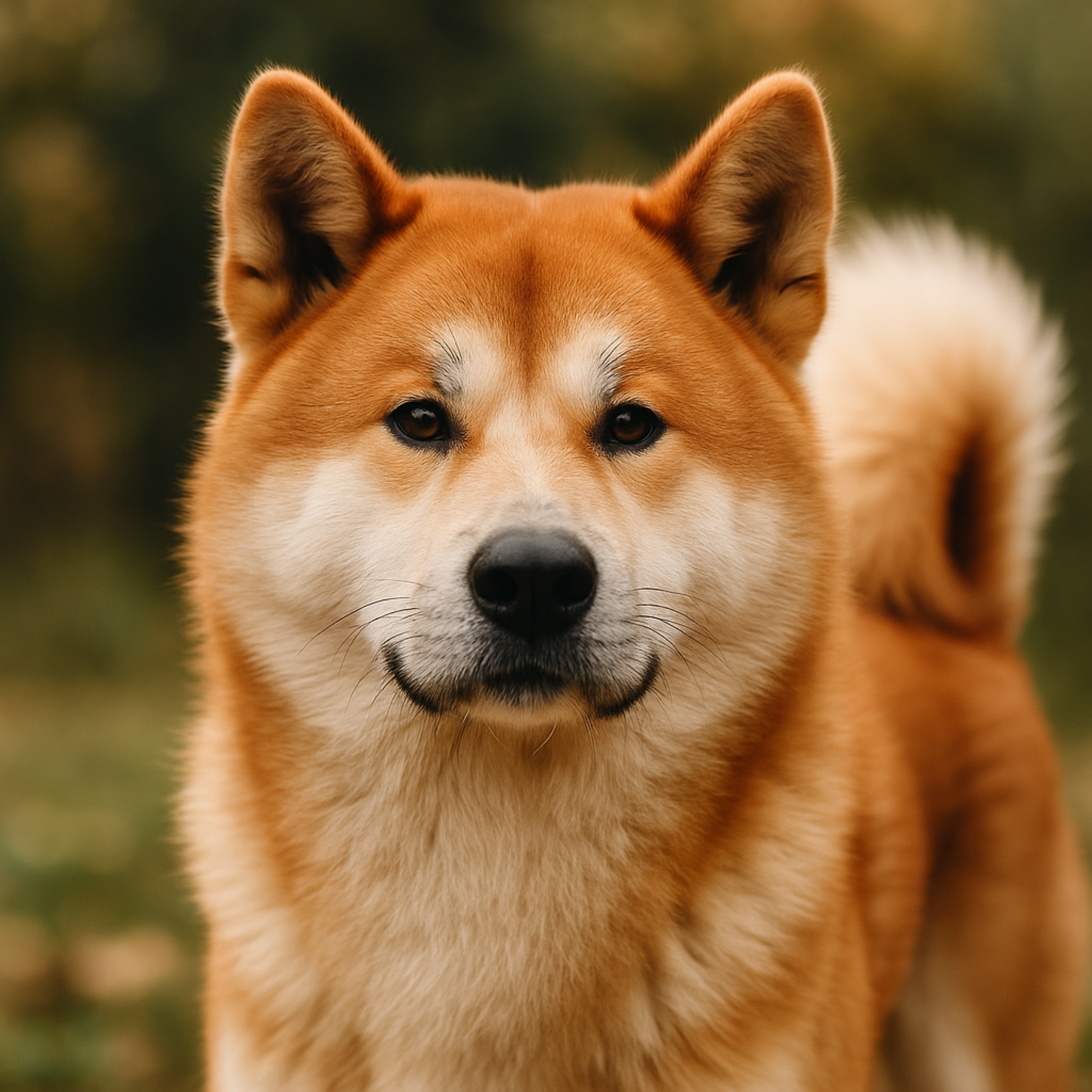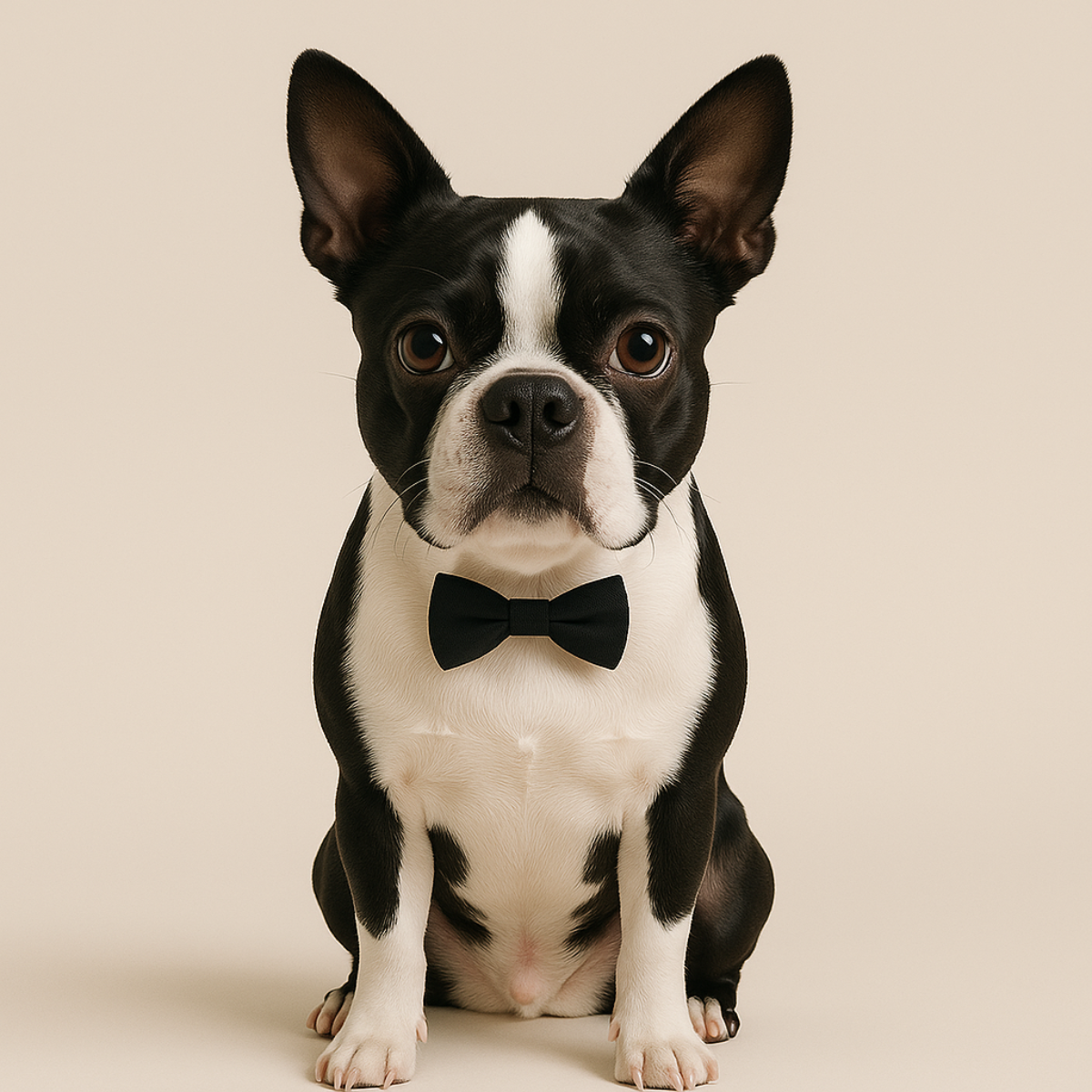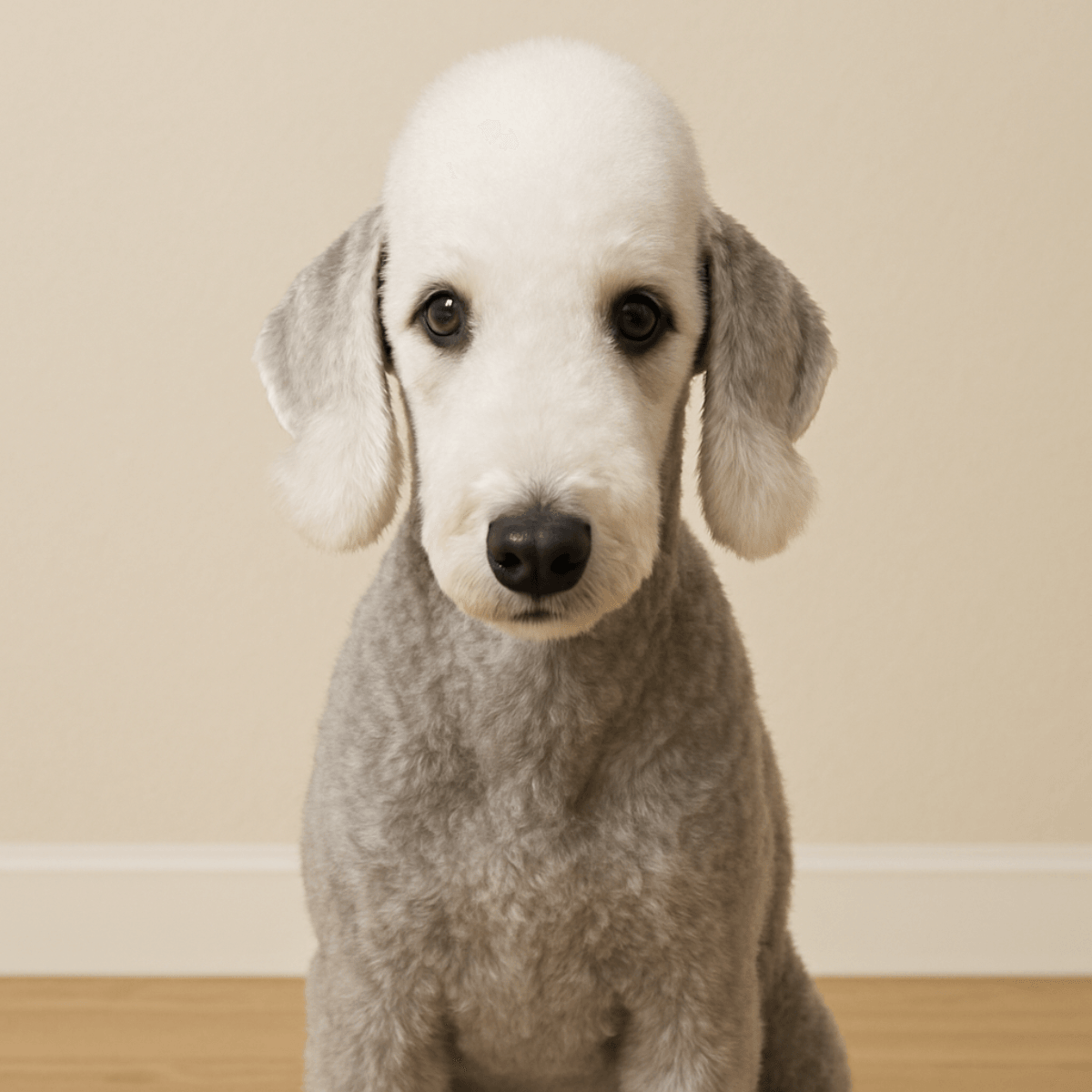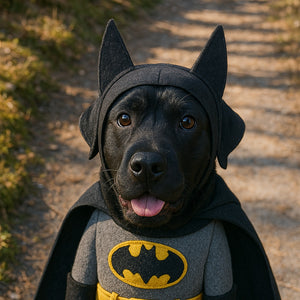
Akita Inu – a Japanese national treasure with the heart of a samurai 🐶🗻
Table of Contents 📚
- Pride of the Land of the Rising Sun 🌸
- The history of the Akita Inu breed – from hunters to natural monuments 🏹
- Hachikō – the dog who never stopped waiting 🕰️
- Akita Inu Appearance – Majesty in Fur 👑
- Akita Inu Character – Loyalty Heart, Independence Spirit ❤️🔥
- How to Raise an Akita Inu? A Beginner's Guide 📏
- Nutrition, care and health 🥗🧼
- Akita Inu at home – who is this breed for? 🏡
- The Role of the Akita Inu in Japanese Culture 🎎
- Interesting facts from Japan about the Akita Inu breed 🇯🇵🐕
- Is the Akita Inu the dog for you? 🤔
- FAQ – most frequently asked questions about the Akita Inu breed ❓
1. Pride of the Land of the Rising Sun 🌸
When we think of Japan, images of blooming cherry trees, peaceful Shinto shrines, and the proud silhouette of the sumoki come to mind. But the dog—the Akita Inu—is equally deeply ingrained in Japanese identity. 🐕 For the people of the Land of the Rising Sun, it's more than just a breed. It's a symbol of loyalty, spiritual strength, and tradition passed down from generation to generation.
The Akita Inu isn't a dog for everyone. They're a demanding, reserved, and independent breed—but for those who understand their nature, they become loyal, lifelong friends. Their history is a tale of warrior dogs, imperial companions, and the legendary Hachikō, who still watches over Tokyo's Shibuya Station.
This article isn't just a dry description of the breed. It's an attempt to understand what the Akita Inu truly is – in the home, in the culture, and in the heart of the person who chooses to share life with this unique creature.
"忠犬ハチ公 (Chūken Hachikō) – Hachikō's faithful dog" – this inscription on the monument at Shibuya Station is more than just an epitaph. It's the quintessence of how deeply the Akita Inu dog has etched itself into the hearts of the Japanese people.
There are things that are revered in Japan—sakura, sumo, Shinto. The Akita Inu can certainly be added to that list. 🐶 It's not without reason that this impressive four-legged creature was added to the list of Japanese natural monuments back in 1931. It's more than just a dog—it's a symbol of loyalty, dignity, and quiet strength. For the Japanese, it's a living legend. 🇯🇵
In this article, we will introduce you not only to the history and characteristics of the breed, but also to the emotional dimension of being the guardian of a dog that carries the memory of the samurai in its soul.
2. The history of the Akita Inu breed – from hunters to natural monuments 🏹
The Akita Inu is not a breed created by chance – it is the result of centuries of selection, a history steeped in the spirit of Japan and devotion to humanity. Its fate is so deeply intertwined with the culture of the Land of the Rising Sun that it is difficult to consider it solely as a dog breed. It is a living monument to national identity.
🏔️ Roots in the mountains of Akita Prefecture
The first mention of Akita dogs dates back to the 17th century. The Matagi—traditional hunters of northern Japan—used them to hunt wild boar, deer, and even bears. Their role was invaluable—strong, agile, and fiercely loyal, they provided a foundation for daily life in the harsh conditions of the Tōhoku region.
🐶 From fighting dogs to imperial companions
During the Edo period (1603–1868), Akita dogs were used for fighting, which was popular in Japan at the time. Later, particularly from the late 19th century, Akita dogs were crossed with European mastiffs and other fighting breeds, which led to the creation of the Tosa Inu and changes in the physique of some Akita lines. Over time, however, a movement emerged to preserve the original form of the breed. In 1908, dog fighting was banned, and in 1931, the Akita Inu was designated a "natural monument"—the first dog to receive this honor in Japan.
Emperor Hirohito and members of the imperial family received Akitas as a sign of respect and prestige. These dogs became symbols of courage and honor—values close to the samurai ethos.
🌏 Survival after the war and the birth of a legend
During World War II, the Akita Inu population plummeted as the dogs were confiscated for military use (for their fur), and famine forced people to abandon their animals. The surviving dogs owe their survival to breeders in Ōdate, who hid them in the mountains.
After the war, American soldiers fell in love with the Akita and took them to the United States, giving rise to the American variety—more robust and with a slightly different character. In Japan, the AKIHO and JKC associations ensured the purity of the Japanese lineage.
"The Akita Inu is not just a dog. It's a piece of Japanese history encased in fur."
During the Edo period (1603–1868), the Akita was crossed with European breeds such as mastiffs and the Tosa Inu. 🐾 However, over time, its original form was restored. In 1931, it was recognized as a Japanese national treasure.
“秋田犬は日本の宝物である” – Akita is a treasure of Japan. This opinion is repeated by breeders associated with the AKIHO association.
3. Hachikō – the dog who never stopped waiting 🕰️
Every morning, Professor Hidesaburō Ueno was escorted to Shibuya Station by his dog. After his unexpected death, Hachikō waited daily for over nine years for his beloved owner's return. 🐕🦺💔
Today, the Hachikō monument is a symbol of loyalty not only in Japan but throughout the world. 🎎
4. Akita Appearance – Majesty in Fur 👑
The first impression an Akita Inu makes is a mixture of respect and admiration. 🐕🦺 Their posture speaks of strength and balance, while their gaze speaks of detachment and intelligence. This breed commands respect simply by its gait: a calm but confident stride. There's no nervousness about them, but something dignified, almost regal.
The Akita Inu's physique has been shaped over the centuries—designed to be a functional dog, capable of surviving the harsh conditions of northern Japan, yet elegant and presentable. Its body is a combination of endurance and harmony.
Breed Standard:
- 🧍♂️ Height: Males 64–70 cm, females 58–64 cm
- ⚖️ Weight: Males 45–59 kg, females 32–45 kg
- 🎨 Color: rust, sesame, brindle, white
- 🧶 Coat: dense, double, with a soft undercoat
- 🌀 Tail: curled over the back




5. Akita Inu Character – Loyal Heart, Independent Spirit ❤️🔥
The Akita Inu is a primitive breed, meaning it has retained many traits of its wild ancestors. It has a strong territorial instinct, independence, a keen sense of observation, and a deep loyalty to its group. This dog wasn't bred for unconditional obedience, but for cooperation with humans in difficult circumstances. Its primitive nature is evident in its behavior—controlled, alert, often reserved—and in how strongly it filters whom it trusts.
The Akita Inu isn't your typical "family dog" who craves attention and play. This is a breed with dignity. With reserve. With a mind of its own. 🧘♀️ Although some consider them difficult to train, Akita owners know that they are a dog that loves deeply—but only those they respect.
❤️ Absolute loyalty
The Akita doesn't get attached easily, but once it trusts you, it's completely loyal. This is a dog that won't leave your side once it sees you as its leader. Hachikō's story is no exception—it's the essence of this breed's character.
🧠 Independence and intelligence
The Akita Inu doesn't follow commands thoughtlessly. He needs purpose, meaning, and... respect. His intelligence allows him to learn quickly, but he also analyzes situations independently. He acts with caution and often makes decisions "his own way."
🤫 Restraint and calm
Don't expect an Akita to bark at the door or throw itself at everyone's knees. This is a measured and quiet breed. It observes. It waits. It reveals emotions only when deemed necessary. It acts with dignity.
🛡️ Courage and composure
The Akita Inu isn't afraid of difficult situations. When threatened, it can defend its family, but it never acts impulsively. It's not an aggressive dog—it's a vigilant one. It's not without reason that the Japanese say, "Akitas see first, think later, and act last."
🚫 Distrust of strangers
The Akita doesn't greet visitors with a happy tail wagging. It's reserved towards strangers—both people and other animals. It requires conscious socialization from puppyhood to prevent its natural wariness from turning into isolation.
For the right owner—calm, empathetic, and assertive—the Akita Inu's personality is a reward in itself. This is a dog that doesn't need commands to understand. It needs presence, authenticity, and a deep connection.
6. How to Raise an Akita Inu? A Beginner's Guide 📏
Raising an Akita Inu is a path to building trust, not dominance. This dog has a strong personality that doesn't respond to violence or shouting—but to the respect, stability, and measured decisions of its owner. If you want this proud dog to recognize you as its leader, you must first earn its attention and respect. 👣🐕
👶 Socialization from the first weeks
The Akita Inu must experience the world from a young age—people, other dogs, street sounds, cars, and children. Socialization is the most important element in raising this breed. Deficiencies in this area can lead to isolation and difficulty interacting with others.
🍖 Positive Reinforcement Training
Forget punishment. The Akita Inu learns quickly, but won't force anything. Training based on rewards, a calm tone, and understanding is key to success. Commands should be simple, consistent, and repeated patiently.
🧘♂️ Rituals and everyday peace
Akitas dislike chaos. They need a harmonious, predictable lifestyle – meals at the same time, walks at a familiar pace, and familiar surroundings. Rituals build a sense of security, which directly influences their behavior.
🧩 Intellectual work
This is an intelligent and thoughtful breed. They love logical challenges, interactive toys, and learning through observation. Sniffing games, learning tricks, and solving simple problems are all worthwhile.
🤝 Building relationships, not subordination
An Akita isn't a dog that will happily obey every command. It chooses whom it trusts. Therefore, it's not about "obedience," but about a relationship—based on calm, confidence, and mutual respect.
👥 Professional help
A well-trained behaviorist familiar with the original breeds can be a tremendous asset, especially for inexperienced owners. Working with an Akita is a challenge that should be approached responsibly—and humbly.
Raising an Akita Inu isn't a matter of strength. It's a matter of the caregiver's character.
7. Nutrition, care and health 🥗🧼
Diet:
Balanced, rich in protein and animal fats. Grain-free food with added salmon oil is ideal.
Care:
- Brushing 2-3 times a week 🧽
- Baths every few months 🛁
- Claw, ear and teeth check 🦷
Health:
- Hip dysplasia 🦴
- Atopy and skin problems
- Hypothyroidism
- Autoimmune diseases
8. Akita Inu at home – who is this breed for? 🏡
The Akita Inu is a dog that thrives in a calm, predictable environment. While its appearance might suggest a warm, cuddly family companion, it's actually a breed that requires understanding and experience. Its independence and primal instincts make it a wonderful companion—but not for everyone.
👨👩👧👦 Who is the Akita Inu NOT for?
- ❌ For families with small children who do not understand the boundaries of a dog
- ❌ For people who expect absolute obedience
- ❌ For very sociable house dogs – Akita rarely gets along well with other animals
- ❌ For impulsive or domineering caregivers
✅ For whom YES?
- ✅ For calm, patient and predictable people
- ✅ For homeowners with a garden or access to nature
- ✅ For lovers of primitive breeds who understand the need for independence in a dog
- ✅ For someone looking for one, true dog friend for years to come
🧭 Akita in an apartment – is it possible?
Yes, but only under certain conditions. They need peace, daily activity, and their own space. Noisy stairwells, little exercise, and a lack of quiet space can lead to frustration.
🛏️ Space and comfort
She thrives in a home with access to a garden, but she's not a dog to be left alone outdoors. She needs the company of a human with whom she bonds. It's a good idea to create a quiet corner for her at home—not in the middle of a noisy environment.
The Akita Inu doesn't need loud emotions. He needs silence, rhythm, and a steady heart in his owner.
9. The Role of Akita Inu in Japanese Culture 🎎
In Japanese culture, the Akita Inu dog holds an almost sacred place. It is not merely a companion to humans—it symbolizes values deeply rooted in Japanese society: loyalty, reserve, harmony with nature, and spiritual strength.
🎁 Talisman of happiness and prosperity
Many Japanese homes feature small ceramic figurines depicting the Akita Inu – often given to pregnant women as a symbol of a healthy birth and the protection of mother and child. It was believed that the Akita's spirit guarded the home and brought prosperity. 🎊
📜 Poetry, art and haiku
The Akita Inu appears in literature and poetry, particularly in haiku, where it symbolizes solitude, quietness, and faithfulness. Its presence in art—paintings, woodcuts, and ningyō dolls—is not only a realistic depiction of its appearance but also an emotional representation of its soul.
🎮 Presence in pop culture
Contemporary culture hasn't forgotten about the Akita either. They appear in anime, manga, and video games as brave, loyal, and strong characters. For example, Gin – the main character of the classic anime "Silver Fang – Ginga Nagareboshi Gin" – is an Akita Inu, symbolizing honor and courage.
🎉 Festivals and ceremonies
In the breed's hometown of Ōdate, annual festivals dedicated to the Akita are held. Parades, working demonstrations, traditional Shinto rituals involving the dogs, and even blessings administered by monks are held. For the region's residents, the Akita Inu are a source of pride and a part of their local identity.
🏯 Akita as a Spirit Guide
In Japanese beliefs, dogs, especially dogs of this breed, can act as guides to souls, guardians between the worlds. They are often placed on family altars as a token of gratitude for their presence and care—not only in this life but also after death.
"If a dog has a soul, then the Akita's soul is like the soul of a samurai: loyal, proud and silent."
10. Interesting facts from Japan about the Akita Inu breed 🇯🇵🐕
The Akita Inu is a breed that captivates not only with its appearance and personality but also with its deeply rooted place in Japanese culture. Here are some lesser-known but incredibly interesting facts that demonstrate just how unique this breed is:
- 🎓 Akita Dog Museum in Ōdate – located in the hometown of the breed, it collects hundreds of souvenirs, documents and exhibits dedicated to the history of the Akita Inu.
- 🧸 Hachikō Plush Toy – This is one of the most popular tourist items in Tokyo. You can buy it at Shibuya Station, next to the famous dog statue, among other places.
- 📜 AKIHO Certificate – Japan's most important Akita Inu breeding association (Akita Inu Hozonkai) issues certificates confirming the purity of the line. Dogs with such a certificate have enormous breeding value.
- 🐕🦺 The Akita breed standard is protected by law – only dogs meeting the Japanese standard can be recognized as "Akita Inu" in Japan. Hence, there is a clear distinction between Japanese and American Akita.
- 🎂 Hachikō's birthday is celebrated on November 10th in his hometown of Ōdate. It's a day filled with festivities, speeches, flower-laying, and remembrance.
- ✈️ The export of Akitas from Japan is strictly regulated – Japanese breeders are reluctant to export their dogs abroad. This process is subject to detailed selection and oversight by the AKIHO organization.
- 🏯 Akita Monument in Akita-ken – not only Hachikō, but also other distinguished Akitas have their own monuments and commemorative plaques in Akita Prefecture.
- 📚 Akita Inu in Education – In Japan, children learn about Hachikō and the Akita breed as part of their civic education. This is part of raising them in the spirit of loyalty and compassion.
“Not every Akita is Hachikō, but every Akita carries his spirit.”
11. Summary: Is an Akita Inu the dog for you? 🤔
The Akita Inu isn't a dog for everyone—but for the right person, they can be the most loyal friend imaginable. 🧡 If you're looking for a dog who will be your shadow, without the need for constant physical contact, but with a deep, unshakable emotional connection—the Akita may be just the dog for you.
This is a primal breed – strong, independent, and proud. It needs a caregiver who won't try to break it down, but will build a relationship with it based on respect and mutual trust. The Akita won't forgive inconsistency or nervousness – but it will give its heart to someone who shows it calm, predictability, and consistency.
Don't expect circus tricks from her. Expect a presence—quiet, yet profound. She doesn't impose herself, but she never disappoints. She's like the spirit of old Japan: full of honor, loyalty, and restrained strength.
"Akita doesn't ask if he loves you. He simply always is. And always will be."
So if you dream of a dog that is not looking for admiration, but for a genuine partnership – the Akita Inu could be your dog for life.
12. FAQ – most frequently asked questions about the Akita Inu breed ❓
Can Akita Inu live in an apartment? 🏙️
Yes, but it requires a lot of commitment from the owner. They need long daily walks, quiet time, and a consistent daily routine. They thrive in a quiet environment.
Is the Akita Inu suitable for children? 👶
Due to their aloofness and independence, the Akita Inu is not a typical family dog for small children. They do better with older children or adults who can respect the dog's boundaries and avoid exposing it to stressful situations. This breed is not recommended as a family dog for small children. They can be too independent and unpredictable. They do better in a home with teenagers and adults.
How much does an Akita Inu puppy cost? 💸
Prices in Poland range from 6,000 to 10,000 PLN, depending on the breeder's reputation and genetic lineage. Dogs from Japan with the AKIHO certificate can be even more expensive.
Does the Akita Inu shed a lot of hair? 🐾
Yes. It sheds heavily twice a year, requiring daily brushing. Otherwise, it sheds moderately year-round.
How long does an Akita Inu live? 🎂
The average lifespan of an Akita Inu is 10 to 13 years. Good living conditions, a proper diet, and veterinary care can extend this lifespan.
Is the Akita Inu an aggressive dog? ⚠️
No. She's reserved and alert, but doesn't seek out conflict. She's incredibly loyal to her human. She requires socialization, but she's not naturally aggressive.
🧡 The Akita Inu is not just a dog. It's a philosophy of life – calm, loyal, and faithful to the end.
🔗 See also:
More information about the history and standard of the breed can be found on the website of the Japanese association AKIHO – Akita Inu Hozonkai .
- 🏙️ Best dogs for apartments – breed ranking
- 💬 How Do Dogs Show Affection? Signals You Should Know
- 🐕 Is your dog pulling on the leash? Find out how to fix it.
- 🚗 How to safely transport a dog in a car?
- 🐾 How to teach your dog to stay home alone
- 🛏️ Can a dog sleep in bed with its owner? Facts, myths, and behavioral advice.
See more at: Petto.com.pl




















































 https://petto.com.pl
https://petto.com.pl